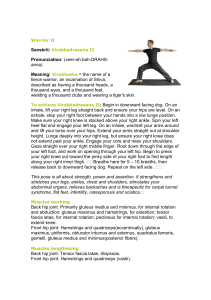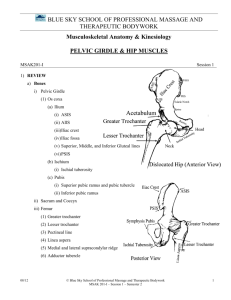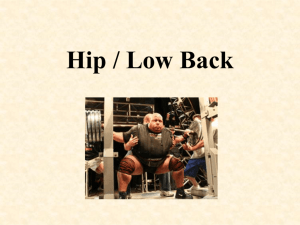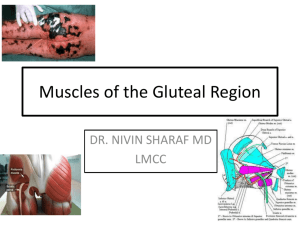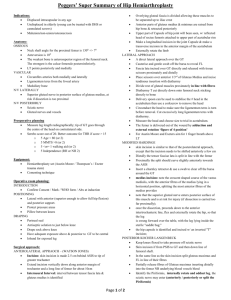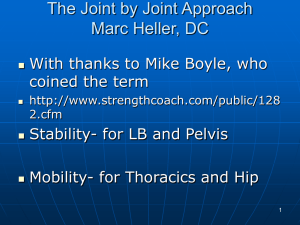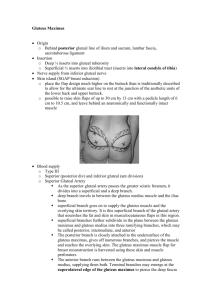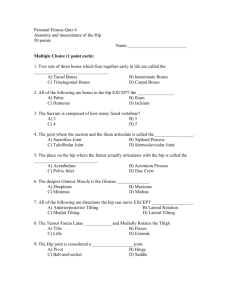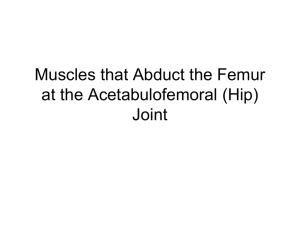File
advertisement
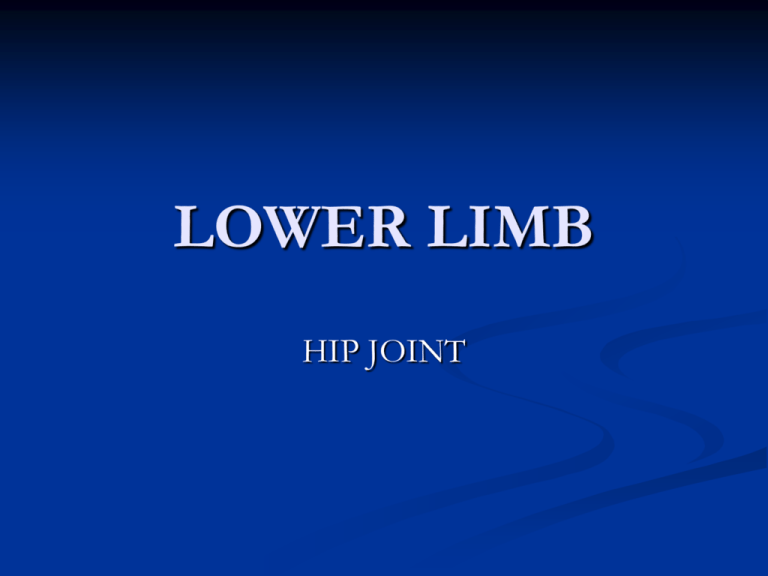
LOWER LIMB HIP JOINT Muscles of the Hip Overview Muscles that cross the hip joint anteriorly Psoas major Illiacus Muscles of the gluteal area Gluteus maximus Gluteus medius Gluteus minimus Lateral rotators of the hip Psoas Major & Iliacus Origin of Psoas Major: Lumbar vertebrae, intervertebral discs and transverse processes Origin of Iliacus: Fan shaped origin in fossa iliaca Psoas Major & Iliacus Common insertion of Psoas Major and Iliacus: Lesser trochanter of femur Psoas Major & Iliacus Action: Flexion of hip joint Lateral rotation of hip joint Stabilisation of hip joint during walking Psoas Major & Iliacus Psoas Major L2-L3 Innervation: Iliacus Femoral nerve Gluteus Maximus Gluteus Maximus Origin: Lateral surface of ileum, behind Ileum the gluteal line Ischium Dorsal surface Pubis (posterior surface) of sacrum, coccyx and sacrotuberous ligament Gluteus Maximus Insertion: • Superficial ¾ ~ iliotibial tract • Deep ¼ ~gluteal tuberosity on femur Gluteus Maximus Action: Powerful extensor of the hip joint ~ only when strength is needed i.e.: Rising from a sitting position Climbing stairs Running Powerful lateral rotator of the thigh ~ when thigh is extended Regulate flexion when sitting Losses strength when thigh is flexed Gluteus Maximus Innervation: Inferior gluteal nerve Gluteus Medius Origin: Lateral aspect of ileum ~ between anterior and posterior gluteal lines Gluteus Medius Insertion: • Oblique insertion onto greater trochanter of femur Gluteus Medius Action: NB: Muscle lies in same coronal plane as hip joint In the anatomical position, the greater trochanter of the femur lies slightly more posterior than the hip joint Gluteus Medius Action: Abduction, as well as, medial rotation of hip joint Plays an important role in walking When the support of one leg is taken away in upright standing position, the opposite muscle will contract reflexively. This prevents the pelvis from tilting Gluteus Medius Action: Paralysis of muscle causes the typical “goose gait” (Trendelenburg sign) Gluteus Medius Innervation: Superior gluteal nerve Gluteus Minimus Origin: Lateral surface of the ileum ~ between anterior and inferior gluteal lines Gluteus Minimus Insertion: • Anterior surface of the greater trochanter of the femur Gluteus Minimus Action: Relationship of gluteus minimus the same as gluteus medius, therefore the action is essentially the same Gluteus Minimus Innervation: • Superior gluteal nerve Lateral rotators of the hip 1. 2. 3. 4. 5. 6. Piriformis Internal obturator Superior gemellus Inferior gemellus Quadratus femoris External obturator Lateral rotators of the hip
